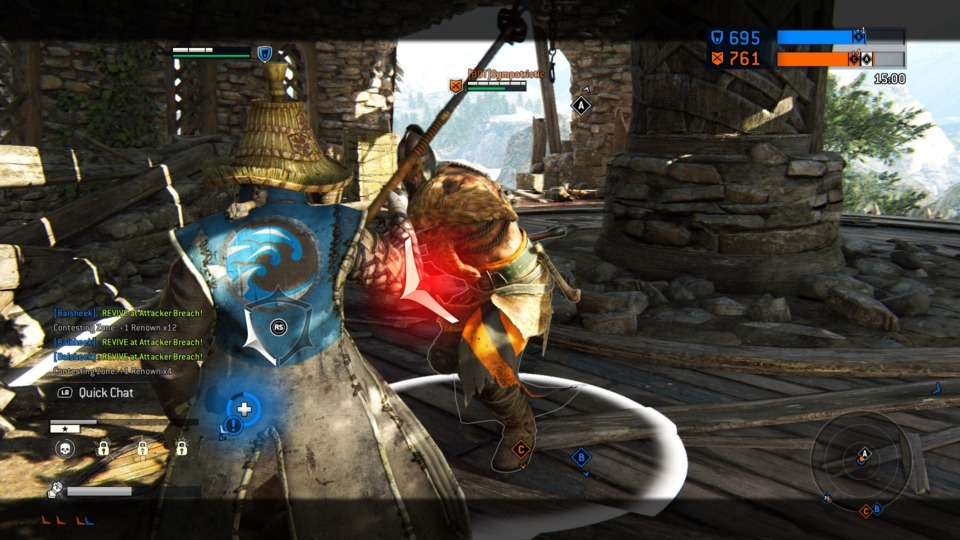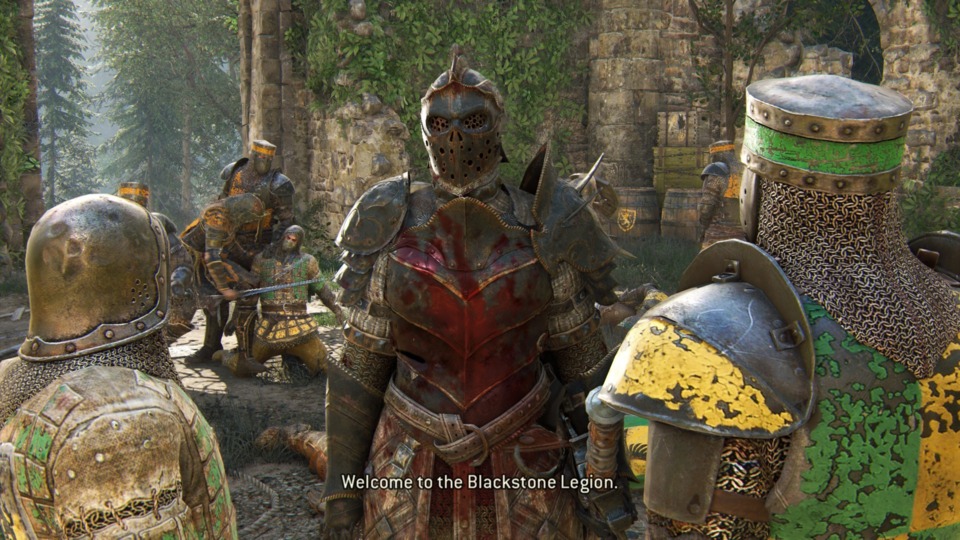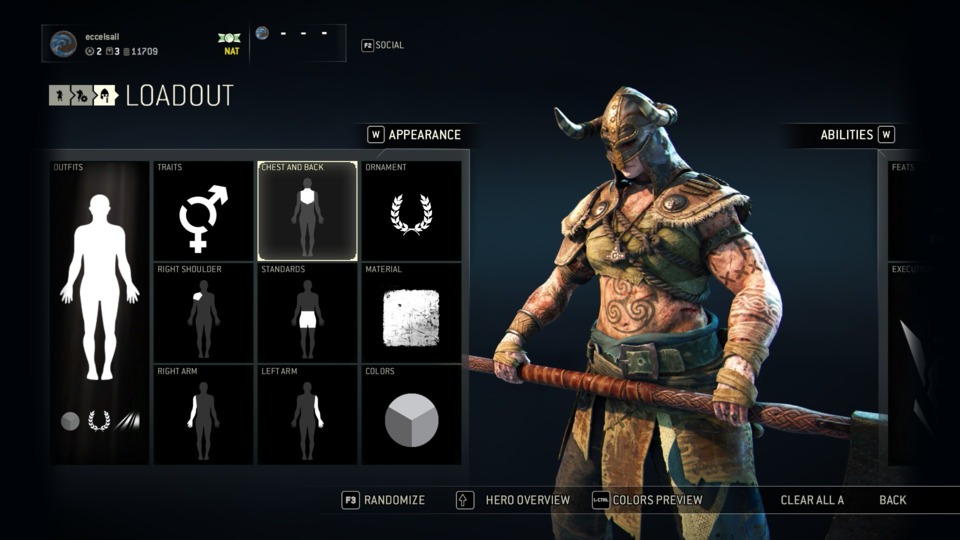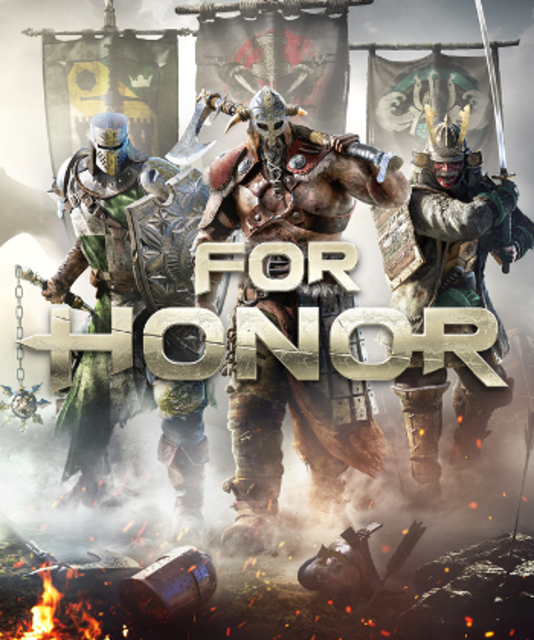Part-Time Gamers Review: For Honor
By Neil Jimenez
Who would win a fight between a Norse Raider and a Japanese Sword Saint? A Knight wielding a long sword and a Viking with spear and shield? These questions have inspired some ridiculous television and Ubisoft’s For Honor. While the game does not try to answer these questions realistically, it does have surprising accuracy for the fighting techniques historically used and creates a unique competitive combat game out of them.
The core gameplay of For Honor is that of a fighting game, which shines when you are in the heat of 1-on-1 combat. However, it does have some major differences from most modern fighting games. First is the use of environment. Flaming carts on the battlefield, edges of pits full of spikes, and even a plain old wall can be used to add damage or outright kill your opponents. The more impressive difference is the simplicity of engagement with the mechanics. For Honor isn’t about high execution combos or a button for every limb. Instead it encourages finding a real flow between light attacks, heavy attacks, guard break, and dodge moves.

The complexity comes from positional awareness, a stamina bar that prevents attack spamming, and the stance system. While in combat, everyone is able to switch between an upper, left, and right stance. When attacking, you do so from one of these stances and, to block, you want to match the stance of your opponent. This stance system on its face doesn’t sound particularly exciting, but in action it makes for intense moment-to-moment gameplay that feels entirely new. Stances can be changed mid attack sequence, feints can be performed to bait people into the wrong stance, and some of the classes even have special stance modes. The level of control this provides makes it extremely rare to feel a loss was unfair, and wins always feel satisfying and earned.
This core of simplicity carries beyond the base mechanics into the design of classes. The move sets for each character can be viewed to give you a raw list of what can be done. However, For Honor also include a basic and advanced tutorial video for every class explaining some interesting properties and ideas of how to use these abilities. Everyone has two or three attack strings and a host of special moves. These special moves are not like shooting fireballs or teleporting around like a super human. Instead, special moves act as tricky mix-ups, slow unblockable attacks, or ways to knock the opponent down.
Though the game has a training mode for testing out these actions, For Honor actually uses its story mode to surprising effect by showcasing what many of the characters have to offer. There are three acts with six missions, each of which focus on one faction. Each act has a primary hero to play as, but the missions do provide the opportunity to use eight out of the twelve classes. While most fighting games with story modes of this fashion drop you into a new character and leave you to figure it all out, For Honor gives some light tutorials for each new character you use. On top of that, as your environment critical to combat in this game, these missions feature structures that can help you understand how to apply these abilities effectively.

Narratively speaking, the story is nothing remarkable, but the world-building is wonderfully executed. The intro cinematic introduces the villain Apollyon, a warmonger who wants to spark endless fighting to cause the powerful to rise in this fictional world. Apollyon herself is prominent throughout in part because she is the narrator for all the events. More interesting are “observation” collectables which, when found, trigger short narrations from Apollyon ranging from her opinions about a specific character, to details about a landmark, to musings about the art of battle.
Multiplayer is the focus of For Honor, including a meta-game outside of the individual matches, and even an in-game currency similar to free-to-play games. The individual matches are separated primarily between the 4v4 modes and the smaller team modes. In the 1v1 or 2v2 modes your team selects heroes and, using all your fighting prowess, battle to win three out of the five rounds. In the 4v4 modes, additional stats come into play based around the customization options for your characters. Gender can be picked for most classes — along with color schemes and emblems – but armor pieces and weapons provide minor stat modifications to things like attack damage or throwing distances. Your loadout for each hero also includes “feats” that unlock through these big team matches to grant you additional abilities like a throwing dagger or passive boosts to the speed with which you can revive allies.

Dominion is probably the most interesting of the big team modes. It focuses less directly on fighting and instead requires each team to control the three zones across a map in order to earn points for their side. These zones provide focal points for action and also split up the groups to allow for smaller skirmishes for control. Upon reaching 1000 points the enemy team loses the ability to respawn, and killing them all wins the match. While these larger scale modes are fun, I find the addition of the feats detracts from the clarity of battle the game usually provides. The most egregious ones only come as max level abilities, which can summon a catapult blast from the sky or large auras of debilitation around someone. When a few of these effects get stacked on top of each other, it becomes too chaotic to really follow.
On the completion of any type of multiplayer map, you earn some experience towards the hero you played as, some War-assets, and a bit of Steel. The experience contributes towards each of your character’s individual levels, unlocking extra colors and alternative feats. The War-assets feed into the overall meta-game where the three factions fight for control of the world map. Before ever stepping into the multiplayer matches you decide on which faction you fight for on this map, but that choice does not limit what characters you can play as. Each time you receive War-assets you can deploy those forces across the battle lines in hopes of controlling more territory. Every few weeks some bonus rewards will be given to everyone based on their faction’s performance. Steel is the in-game currency, used for unlocking the ability to customize heroes and purchasing randomized equipment boxes for them. It can also be used for a lot of vanity cosmetic effects or even to unlock all of the ability loadout progression. The flashiest unlocks have some very high costs, making it no surprised that there is an in-game store to spend real money on a bunch of Steel.
It is unfortunate that so many elements contribute to giving For Honor the appearance of a free-to-play game. With some shifts to Steel costs on unlocking champions for customization, I could very easily see this game going the League of Legends route for monetization. Luckily, you don’t need to engage with any of the stuff around the core game if you don’t want to. You can just experience the quality of animation making each swing crash with real weight, the expert design allowing a flow state to be found naturally, and the clarity of the UI granting an excellent sense of place while not getting in the way. At the end of the day, For Honor is just a damn fun. Its variety of fighting styles and attention to realistic movement grant my fighter an expressiveness in my personal play style. It makes me feel like a warrior, and it feels damn good.
